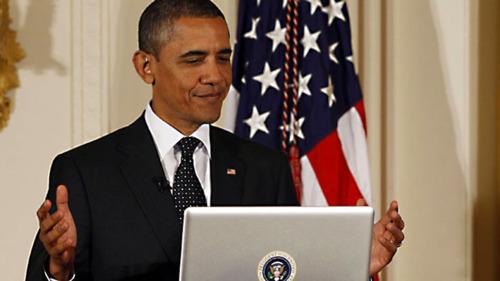In an attempt to keep the US towards the front of the pack in the global technology race, President Obama has signed an executive order that calls for US engineers and scientists to build the world’s fastest supercomputer by 2025.

Within the details of the proposal, it is outlined that the group tasked with creating this machine, a new entity referred to as the National Strategic Computing Initiative, will need to build a computer capable of operating at speeds that are 20 times quicker than the current leading machine, the Tianhe-2 in China’s National Computer Center. The Tianhe-2 performs at 33.86 petaflops (quadrillions of calculations per second) which is, at present, twice as fast as the second-quickest machine (and is worth pointing out, American).
President Obama has requested a machine capable of making one quintillion (a billion-billion) calculations per second — a figure also known as one exaflop, which is why this machine is referred to as an exascale computer.

While the goal behind signing off on this order is no doubt to establish the country as a leader in the technology arms race, there are some other reasons as to why the country’s Commander in Chief wants to see the development of such a machine. Primarily, the exascale computer would be used to perform complex simulations and help with scientific research. It would also help analyze weather data for more accurate forecasts, and assist in cancer diagnoses by analyzing X-ray images.
Additionally worth pointing out, per the White House’s blog post on the executive order, this machine could be used by NASA as a means for allowing its scientists to better model turbulence and in turn design a more streamlined aircraft; this would eliminate the need for wind tunnel testing.
The hurdles standing between signing off on the order and actually building the machine are obviously numerous, but they’re not insurmountable. Of the more pressing concerns though — and this may not be fully ready by 2025 — is the need for computer components that are significantly more power efficient. Despite whatever progress is made over the next few years in building an exascale computer, even if US researchers are able to get the machine down to 60 megawatts — which would be impressive — the annual electricity bill to run it would be somewhere in the neighborhood of $100m.
The President’s desire to invest in this sort of technology may come as a bit of a surprise to some, but the idea of building a computer as powerful as that which is described above is not entirely new. Just recently, IBM, the Netherlands Institute for Radio Astronomy, and the University of Groningen came to an agreement to work together to build one for the purpose of analyzing data from the Square Kilometer Array radio telescope project. It is set to be built in Australia and South Africa by the early 2020s.
Read the White House’s full blog post.
Story via the BBC
Advertisement
Learn more about Electronic Products Magazine





